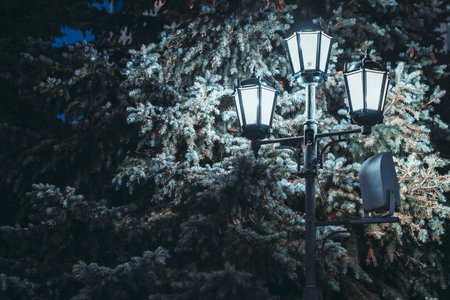Understanding Right to Light
In England and Wales, the concept of the right to light is a long-established legal principle that often causes confusion among property owners and developers alike. Essentially, the right to light grants a landowner the entitlement to receive a reasonable level of natural daylight through defined openings—typically windows—in their building. The origins of this right can be traced back to common law and were formally recognised by the Prescription Act 1832. Under this legislation, if a window has enjoyed uninterrupted daylight for at least 20 years, the owner may acquire an enforceable right to light. Importantly, this right is distinct from planning permission or other property rights; it focuses solely on the amount of natural light entering a building and whether new developments might unduly interfere with it. Understanding these basic principles is key before delving into the many misconceptions that surround the topic.
2. Right to Light vs. Right to a View
One of the most prevalent misunderstandings in England and Wales is the confusion between the “right to light” and the “right to a view.” While both concepts concern property and development, their legal standing is markedly different under UK law. Many homeowners believe that they are entitled not only to natural light but also to an uninterrupted scenic outlook from their windows or gardens. In reality, these rights are not interchangeable.
Clarifying the Distinction
The right to light is a specific easement that allows a property owner to receive sufficient natural light through defined apertures, such as windows. This right can be acquired over time, typically after 20 years of uninterrupted enjoyment. In contrast, there is no legal entitlement in England and Wales for a property owner to preserve their view across neighbouring land, regardless of how long it has been enjoyed.
Key Differences Recognised by UK Law
| Aspect | Right to Light | Right to a View |
|---|---|---|
| Legal Status | Easement (protected by law) | No legal protection |
| Acquisition | Typically acquired after 20 years continuous use | Not recognised as a right, regardless of duration |
| Typical Protection | May lead to injunctions or compensation if infringed | No basis for legal action if obstructed |
| Relevant Legislation/Case Law | Prescription Act 1832; case precedents like Colls v Home & Colonial Stores Ltd [1904] | N/A – No legislative basis |
Summary for Property Owners and Developers
If you are concerned about new developments near your home, it is crucial to understand that only your access to adequate daylight may be protected by law—not your right to maintain an existing view. This distinction often comes as a surprise, highlighting the importance of seeking tailored legal advice rather than relying on common assumptions or hearsay.
![]()
3. Automatic Rights and Acquired Rights
One of the most widespread misconceptions about the right to light in England and Wales is the belief that every property owner is automatically entitled to this right. However, this is not the case. Unlike some other property rights that may attach as soon as you own a home, the right to light must generally be acquired over time or expressly granted. In most instances, a right to light is established through long-term, uninterrupted enjoyment of light passing over another persons land—typically for a period of at least 20 years. This process, known as prescription, means that unless you or your predecessors have benefited from natural light through specific openings for at least two decades without consent being withdrawn or significantly altered, you may not have an enforceable legal right. Its important to note that simply owning a window facing another property does not grant you automatic protection under the law. Instead, the law recognises acquired rights based on consistent use and established patterns over time. Understanding this distinction helps to clarify why not all disputes regarding light loss result in successful claims and underscores the importance of professional advice when considering alterations or developments that might impact neighbouring properties.
4. Impacts of Development Planning
One common misconception surrounding the right to light in England and Wales is the belief that securing planning permission from the local council provides absolute protection from any subsequent right to light claims. In reality, planning approval and rights to light operate within separate legal frameworks. It is essential for property owners, developers, and homeowners to understand how these two systems interact and where their responsibilities lie.
Planning Permission vs. Right to Light: A Clear Distinction
The table below highlights the key differences between planning permission and right to light:
| Aspect | Planning Permission | Right to Light |
|---|---|---|
| Legal Basis | Town and Country Planning Act 1990 (and related regulations) | Common law and Prescription Act 1832 |
| Authority Involved | Local council (planning department) | Civil courts (private rights) |
| Main Focus | Broader public interest—appearance, use, density, access etc. | Private rights—adequate natural light for neighbouring properties |
| Protection Provided? | No automatic immunity from private claims | May result in injunctions or compensation if breached |
The Role of Local Councils
Councils consider a wide range of factors when granting planning permission, such as building height, use, heritage concerns, environmental impact, and neighbourhood amenity. However, they do not directly assess or enforce individual right to light issues. Their approval does not extinguish a neighbours existing right to adequate daylight under common law. As such, even after receiving all necessary permissions from the local authority, developers can still face civil claims from affected neighbours if new structures significantly reduce their natural light.
Mitigating Risk: Practical Steps for Developers and Owners
- Conduct a Right to Light Survey: Commissioning professional assessments before submitting plans helps identify potential risks early.
- Liaise with Neighbours: Open communication can lead to negotiated agreements or design adjustments that respect established rights.
- Consider Insurance: Right to light insurance policies are available to cover the financial risk of future claims.
- Seek Specialist Advice: Legal specialists can clarify obligations and support negotiations if disputes arise.
Avoiding Costly Mistakes
The key takeaway is that planning permission is not a shield against right to light litigation. Addressing both regulatory requirements and private rights at each stage of your project prevents costly delays, redesigns, or court-ordered remedies further down the line.
5. Resolution and Compensation
Many people believe that right to light disputes in England and Wales always lead to costly court cases or result in automatic financial compensation. However, the reality is far more nuanced. When a right to light issue arises, the preferred approach is often negotiation or mediation between the affected parties. The courts are typically seen as a last resort, not the first step. There is also a common misunderstanding that compensation is guaranteed if your light is obstructed. In truth, compensation is only considered under specific circumstances, such as when loss of light falls below acceptable thresholds and the impact on property use or value can be clearly demonstrated.
The process for resolving right to light disputes usually begins with expert assessment and attempts at amicable agreement. If these discussions fail, parties may turn to alternative dispute resolution methods like mediation before contemplating litigation. It’s also important to note that an injunction—an order to halt building works—is not automatically granted; courts weigh up factors such as whether financial compensation would suffice or if stopping the development would be disproportionate. Thus, remedies are tailored to each case and compensation is neither automatic nor unlimited. Understanding these realities helps dispel the myth that right to light issues inevitably lead to large payouts or lengthy legal battles.
6. How to Protect or Lose Your Right to Light
Understanding how to safeguard your right to light—or inadvertently forfeit it—is crucial for property owners in England and Wales. The law surrounding this area is nuanced, but practical steps can make a significant difference.
Protecting Your Right to Light
Monitor Neighbouring Developments
Stay vigilant about planning applications and construction activities nearby. If a neighbour submits plans that may affect your light, you can object during the planning process or seek professional advice early on.
Register Your Right
While not compulsory, registering a right to light with the Land Registry as an agreed easement can clarify your entitlement and put potential developers on notice.
Maintain Continuous Use
The right to light typically accrues after 20 years of uninterrupted enjoyment through a specific window or aperture. Ensure alterations to your property do not reset this period or remove the relevant openings.
Seek Legal Advice Promptly
If you suspect your right may be infringed, consult a specialist solicitor or a rights of light surveyor. Early action can help preserve your position and potentially avoid costly disputes.
Risks That May Lead to Losing Your Right
Giving Express Consent
If you formally agree to a neighbour’s development which blocks your light, you may lose your legal protection. Always consider the long-term implications before consenting in writing.
Obstruction Not Challenged
Failing to act when an infringement occurs could weaken your claim. Delays might imply acceptance, especially if no objection is raised within a reasonable timeframe.
Physical Changes to Property
If you block up or significantly alter windows, you might lose accrued rights associated with those apertures. Any changes should be carefully considered in consultation with professionals.
Conclusion
A proactive approach is essential—monitor developments, seek advice, and understand the importance of timely action. By doing so, property owners can effectively protect their right to light or avoid actions that could result in its loss.


